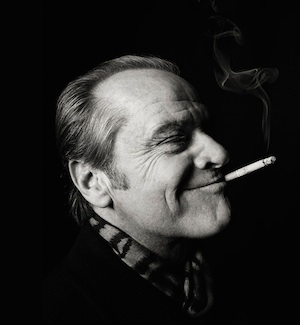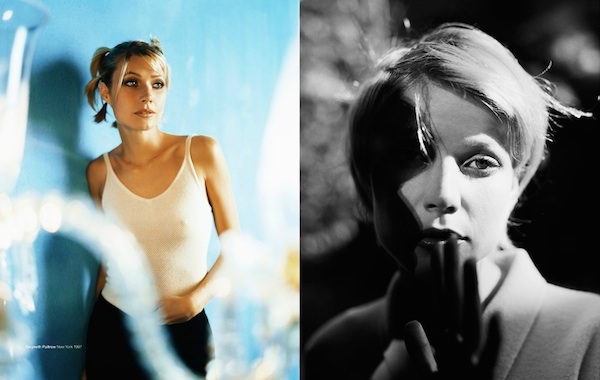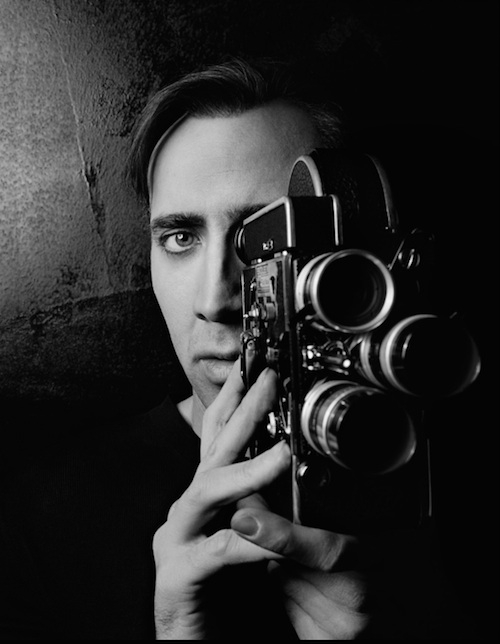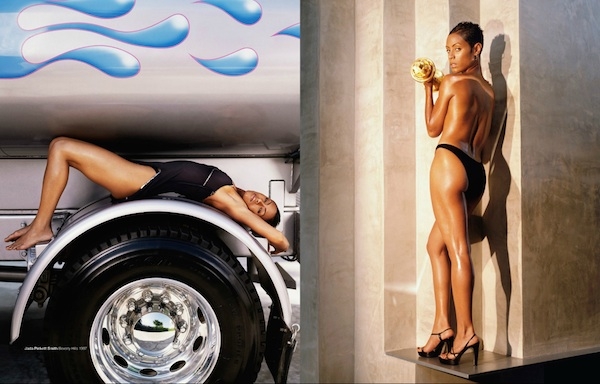Photographer Profile - George Holz: "An image must be able to stand on its own without celebrity content"

|
|
|
In recent years, there’s been a line of thinking to that effect, as Hollywood struggled to lure people into theaters. In 2013, for instance, Forbes noted that big studios, bruised by underperforming films featuring big-name actors, were choosing to spend their money on expensive special effects rather than marquee names. “Gone are the days when stars could easily demand $20 million paychecks plus 20 percent of the first dollar gross. Now most stars are lucky to get 20 percent of a film’s ‘profits,’” wrote the magazine.
Likewise, film-industry journalist Peter Bart declared in Variety last year that movie stars were an endangered species. In Hollywood’s biggest franchises — movies like Captain America and Spiderman — the real stars are superheroes, while casts are interchangeable, he wrote.
George Holz, on the other hand, isn’t ready to pronounce the movie star dead.
One of the country’s premier celebrity photographers, Holz has been around long enough to see generations of stars come and go, and he holds to more of a steady-state theory of the Hollywood cosmos. “Today you’ve got the Bradley Coopers and the Jennifer Lawrences, so there are still stars,” he says.
Holz began his career in the 1980s, when Hollywood, reborn from the ashes of the studio system, found its economic footing with blockbusters and bankable stars. He was among a group of photographers — including Matthew Rolston, Herb Ritts, Greg Gorman and Annie Leibovitz – who visually defined this new Hollywood with an outsized glamour. Over the years, he’s photographed everyone from Anthony Quinn to Javier Bardem.
“I’ve been lucky, because I shot a lot of these actors and other performers when they were very young and relatively unknown—for instance, both Brad Pitt and Angelina Jolie–and then watched them become huge stars,” he says.

Holz has now brought out a retrospective book, Holz Hollywood, looking back at his three decades of celebrity photography. It’s a study in changing styles and notions of beauty, the currency of the movie industry since its earliest days. Viewing the work, it is possible to detect how Hollywood and celebrityhood have evolved, as well as how Holz himself changed as a photographer.
"For me, what was interesting was looking back at entire shoots for magazines and seeing what was picked and what wasn’t, for whatever reasons,” he says. “Over time, your eye changes and you see those images differently. There were times when I’d think, ‘Wow why didn’t I print that image earlier?’”
The Monumental Photo
When Holz first started thinking about doing the book, the idea was to look back at 25 years of his celebrity work.
“But it took me five years to get it done, so we’re looking back at 30 years,” he says. “I started going through about 15 filing cabinets full of negatives — 95 percent of the work is analog. There were thousands and thousands of photographs that I went through, with help of some friends.”
One of them was veteran photography editor Chris Dougherty. A former director of photography at both People and New York magazines, Dougherty first met Holz in the 1990s, when he was the photo director at Premiere magazine.
“What I discovered about George was that he would take the most straight-forward assignment, and when you got the pictures back it was clear that he’d done so much more than you originally imagined,” says Dougherty. “When you see him on set, he’s constantly pacing and thinking during breaks. When he shoots, it’s like a dance, he’s moving with his subjects, and in the end he doesn’t capture just one contrived moment but a series of intimate moments.”
Among the gems that Holz turned up in his files were images from a 1994 shoot with Joan Jett that have never been published. He also found work from a shoot with Carly Simon, done for an “at-home” feature in InStyle magazine.
“There were some sleepers that the magazine chose not to use at the time,” Holz says. “I remembered that I’d shot a lot of black-and-white images of Carly that had been shelved. There’s some great stuff of her in a bathtub nude with a lobster.”

Another series that stood out for Holz came from an InStyle shoot with actor, director
and artist Dennis Hopper. “We were at his compound in Venice Beach, and Dennis was walking around the place vacuuming. He was very intense—he wasn’t a happy, smiley kind of
guy,” Holz recalls.
At one point, Holz took Hopper outside to shoot a portrait with the 11x14-inch Deardorff view camera he had brought out from his studio in New York. “I loved shooting with that camera during that period,” Holz says. “I thought it captured people in a different way—they showed it more respect and posed differently when they were in front of it.”
If Hopper had respect for the Deardorff, he had little patience for the process of shooting with it. “I was focusing and worrying about light leaks—you can’t hurry with a camera like that—and he was like, ‘Okay, any time now, please,’ because just then there was shooting on the corner,” Holz says. “So I ended up calling that photo ‘Drive-By Shooting.’”
Back in those pre-digital days, Holz also shot with a Pentax 67 and a Mamiya RZ67 Pro. “I miss film,” he says. “I miss waiting to get it back from the lab. And then it arrived and you opened the box—it was like being a kid on Christmas morning.”
If Hollywood’s stars have become less monumental than they once were — screen legends replaced by reality-TV performance artists — so, perhaps, has the process of photographing them.
“I can’t stand looking at my photos on the back of a camera all the time,” Holz says.
Essential Elegance
There is an essential elegance in Holz’s celebrity pictures that calls to mind the work of European fashion photographers like Guy Bourdin and Helmut Newton, who, as a matter of fact, Holz assisted back in the 1970s, while he was also attending the Art Center College of Design in Pasadena, California.
“He was a master of what he did. It wasn’t so much about technique. It was seeing his point of view, how he communicated with the models, how he saw light,” Holz says. “You go to school and you learn that everything has to be done in this magic light at the end of the day—you would never shoot a woman in the middle of the day with hard sun. But there was Helmut in the middle of the day, sculpting the face and the body.”
Working with Newton was more or less a dream come true for Holz: Growing up in Oak Ridge, Tennessee, he became interested in photography in high school and used money from odd jobs to buy French fashion and photography magazines; he cut out images by Newton, Bourdin, David Hamilton, David Bailey and other photographers and taped them to his bedroom walls. “There were a lot of nudes, and my mom was like, ‘What are you doing in there?’” he says.

In the early 1980s he was living in Milan, shooting fashion for Mademoiselle magazine and beauty work for Max Factor and other clients. It was only later that he began shooting celebrities. “By that time, movie stars had become culturally important in a way they hadn’t before — magazines stopped putting models on their covers and replaced them with actors,” he says.
Today, with Instagram and social media, celebrities of every amplitude can deliver their faces to fans in new ways. In that sense, it’s not only the stars that have gotten smaller; so have their pictures. The photographs in Holz’s new book, however, are big, and timelessly enchanting.
“An image must be able to stand on its own without celebrity content,” Holz says. “If you're relying on star quality, the image won't endure. Some of the most powerful moments occur when someone sees a photograph and doesn't recognize the subject –– they are drawn in to it, and then there is this flash of recognition when they say, ‘Oh, that's Gwyneth or Antonio or Joaquin.’ So, first and foremost, the image must be crafted properly— lighting, composition, and timing. Secondly, the subject must emote a certain allure, a magnetism. For this to happen, your subject has to trust you, and that means you have to earn that trust. I’m asking people to expose their souls here. That’s a very big request.”


